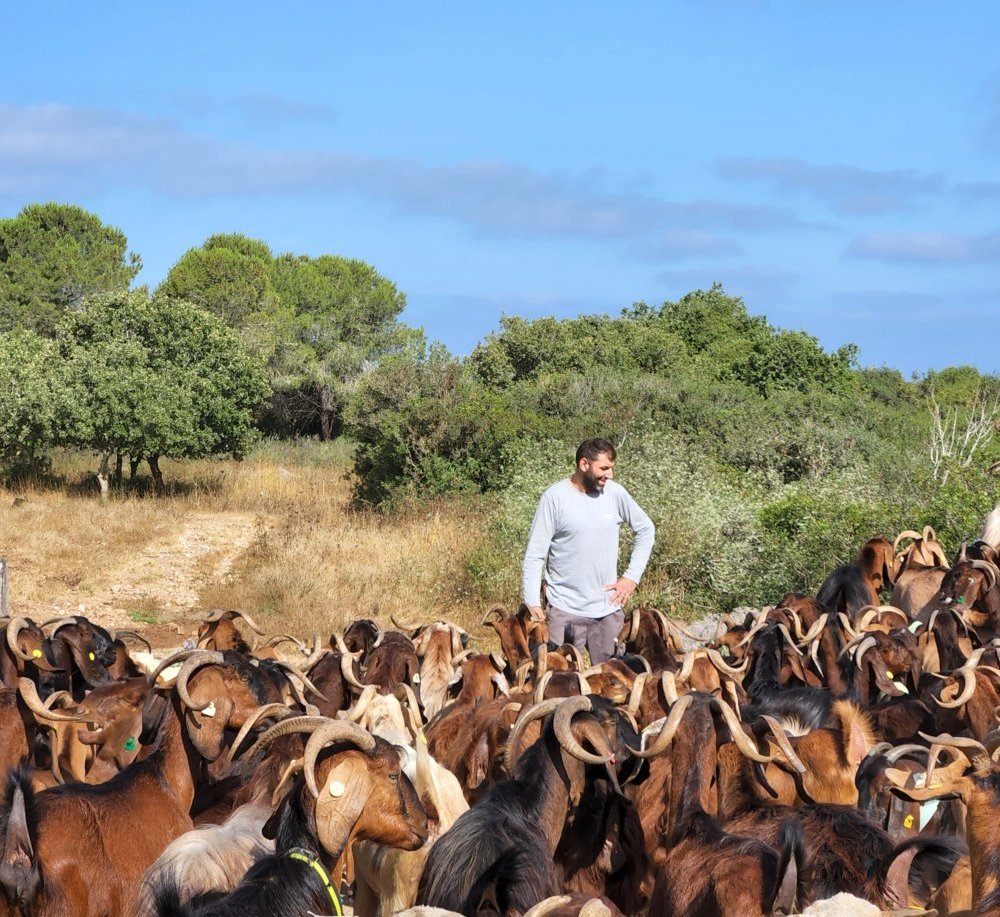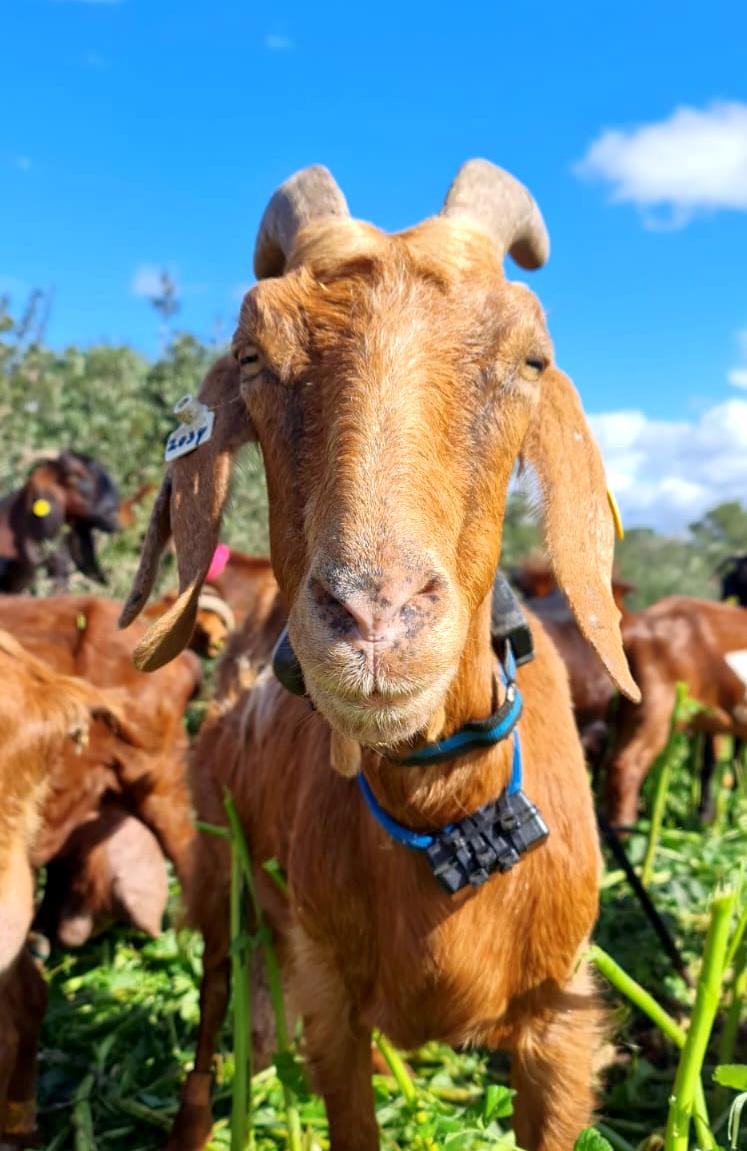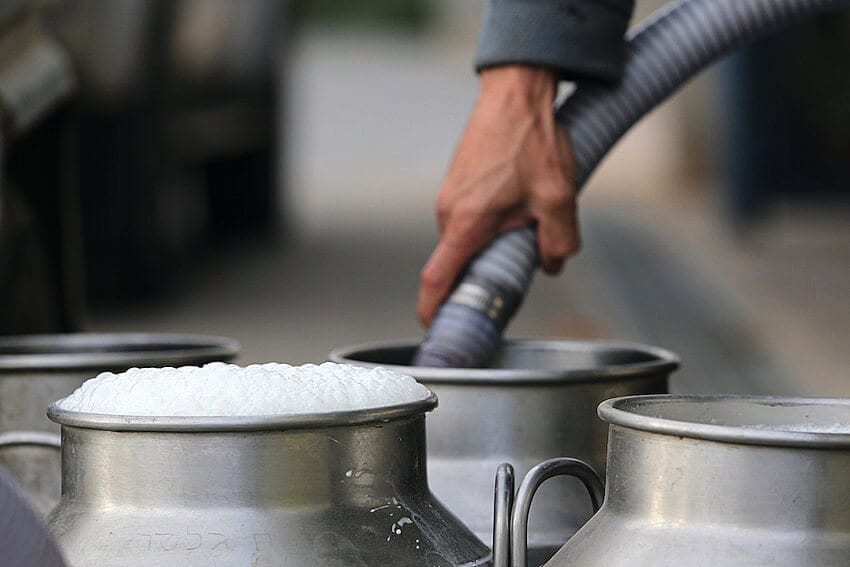Being Part of the Herd
He arrives at Ramat Hanadiv before dawn. He gives the goats nicknames, is present at most of the births in the goat pen and even has a ‘duty goat’. Nice to meet you – Najah Halabi
 News and Events
News and Events
He arrives at Ramat Hanadiv before dawn. He gives the goats nicknames, is present at most of the births in the goat pen and even has a ‘duty goat’. Nice to meet you – Najah Halabi

‘We’re here already at 5:00’, says Najah with a smile. ‘We do the rounds to make sure the night passed uneventfully, there were no births, no-one is hungry before we begin milking. Milking is quick at the moment’, he explains, ‘In the lead-up to the kidding season the goats’ milk dries up and there is less milk.
Each morning the goats come to be milked at one of the 24 specially designed milking stations. Usually, about 120 goats are milked daily in the pen. The milking is performed by one of the staff who works in the pen: Najah, Harel, Avi or Nir, sometimes assisted by a member of our wonderful group of volunteers who work in the pen. While the goats stand in line waiting they enjoy a delicious feed mix. After milking they go out to graze.
GPS: Goat Positioning System
‘There is a volunteer goat’, says Najah, his infectious smile spreading across his face. ‘She receives a special GPS that helps her navigate according to the grazing program. Today grazing is backed up by smart technologies so I can see on the app where we were and when. The volunteer goat has special status; she knows that she has a special role and receives extra petting each morning. Goats’, he sighs and his smile broadens, ‘They have a unique character.’

There is a volunteer goat, she receives a special GPS that helps her navigate according to the grazing program. The volunteer goat has special status; she knows that she has a special role and receives extra petting each morning.


Who’s going out to graze?
The goats lead, the sheep follow. The females go out to graze, for about four hours and for an average distance of five kilometres each day. Heavily pregnant goats often stay to rest in the pen and receive special care and food. This ritual takes place each day under nearly all conditions, except for when particularly heavy rain falls – then even the goats are mainly interested in looking for shelter instead of eating…
At 12:30 they finish and return to the pen, count and check that everyone returned safely. At 14:00 there is another round of milking and feeding, the stalls are cleaned, they say good-bye and plan to meet again the next day, and so on, each day.
Has one of the goats ever gotten lost?
‘Sometimes it happens, and then the entire team goes out to look for it. Each goat has a number, and many of them also have names: Petel, Julia, Shanty, Vanilla, Yonit – each one according to her personality. I’m sure you’re asking yourself what that means…Vanilla has a yellowish coat, Maple is brown, Shanty is just an “anti Shanti”…and the volunteer is number 2 who received the original name “Volunteer” – I love them all.
‘The males also have names. There’s Shachar (black) – because of his black coat, Kere’ach (bald), Alfan, Eden (delicate) – he’s a delicate one, that’s how I recognise him, Alfasy (Alpine/Damascus cross), Ketem (spot) – because he’s all black with a white spot, Damascus (Damascus breed), and other ones that I remember by their numbers, not because I love them any less G-d forbid’, he emphasises.
How does the mating take place? Does the pen acquire a special ‘character’ during that season?
‘There’s a special mating program, it doesn’t just happen; there are many considerations. For example, sometimes a certain breed needs to be strengthened, so we divide the herd into suitable groups, and as I explained’, he reminds me, ‘before kidding the amount of milk decreases significantly, thus there is great value to spacing the kiddings, so that a continuous, sufficient amount of milk will be produced by the herd.

The milk here is considered to be very high quality and the amount is also impressive. We are constantly making adaptations to the breeding in order to achieve good amounts of high quality milk, while of course closely maintaining the quality of life of the goats in both the pen and the pasture.


The milk here is considered to be very high quality and the amount is also impressive. We are constantly making adaptations to the breeding in order to achieve good amounts of high quality milk, while of course closely maintaining the quality of life of the goats in both the pen and the pasture.
‘After two months there will be another round of mating. In each stall we will put one male goat with 24 female goats. After two months all the females will be pregnant. We do pregnancy tests on them and closely monitor their pregnancies.’
What do you like most about your job?
‘I especially like the feeling after kidding – everyone is healthy, living well and ready to be spoiled by the staff of the pen. If we don’t do our job properly during kidding season, half of the kids will die’, Najah warns. ‘A kid, after it is born, is very weak. We built special kidding stalls, and put the mother there with her kids so they can bond, enjoy the good conditions that help them get stronger, and also develop their independence.

I especially like the feeling after kidding – everyone is healthy, living well and ready to be spoiled by the staff of the pen

The kids suckle as needed. By the time they are weaned (about 45 days) they have a clear bond with their mothers, and then slowly, slowly they leave her and become more independent. Some insist on suckling longer, and of course we don’t stop them. When the mother becomes pregnant again she won’t let the kids approach her to suckle. After the kids become stronger we move them to a slightly larger stall, and when they’re three months old they join the rest of the herd. We’re here for them 24/7’, Najah concludes, ‘except for Yom Kippur, and even then we make sure they’ll be looked after with devotion.
‘Not only do the goats love our pen, but also the volunteers and employees and even the researchers. It was designed as a research environment; everything here is measured, organised and computerised. It really is a unique pen.’
Did you like it? Join our free mailing list to receive monthly news and updates about activities for the whole family. Register here.
Any question? We will be glad to help